Budget spectrometer pulse meter Uprtek MF250N
A spectrometer is a device that measures the spectrum of light and allows you to determine parameters such as color temperature and color rendering index . A pulse meter is a device that measures the pulsation of light.
Uprtek MF250N combines these two devices and, apparently, is the cheapest spectrometer in the world.

Spectrometers are of two types - those that analyze light and those that analyze the properties of materials in reflected light. The Wikipedia article is devoted to the second one, and the spectrometers I’m talking about are used to analyze the light.
')
Such spectrometers are quite expensive (primarily due to the fact that they are produced in small batches). The device UPRtek MK350D ( my review ), which I use in the project Lamptest, costs $ 1,700 and it is also considered cheap. The budget spectrometer pulse meter Uprtek MF250N costs twice cheaper - $ 850. It differs from more expensive models with a little lower accuracy, lack of connectivity to a computer and power supply from batteries. Before the latest firmware, the data could only be viewed on the device screen, but in the new firmware they added the ability to save data to a memory card, which was previously used only to update the firmware.
Spectrometers Uprtek is produced by the Taiwanese company of the same name. St. Petersburg-based INTECH Engineering participated in the development of spectrometers and the writing of mathematical models, and it also sells Uprtek products in Russia. Once again I want to express my gratitude to this company and its general director Alexey Pankrashkin for the MK350D spectrometer provided for the Lamptest project.
UPRtek MF250N analyzes the visible light in the wavelength range of 380-780 nm and can perceive light at illumination of 70-70000 lux. The resolution of the matrix is 16 bits, the step of measuring the wavelength is 1 nm, the step of writing to a file is 2 nm, the accuracy of measuring the wavelength is ± 1 nm, the error in measuring the illuminance is ± 5%. The spectrum is calculated peak wavelength, correlated color temperature (measurement error ± 3.5%), the average color rendering index Ra (measurement error ± 2.5%). The measurement accuracy of the color parameters of the MF250N is slightly lower than that of the more expensive Uprtek spectrometers (they have a color temperature measurement error of less than 2%, and a CRI measurement error of 1.5%).
Using a separate sensor, the parameters of light pulsation are measured. Measurement speed - 5 measurements per second. The range of illumination for measuring pulsations is 30-60000 lux. The measured pulse frequency is 5-2000 Hz. Pulsation parameters displayed: ripple index, ripple coefficient, level of visible stroboscopic effect (SVM), ripple frequency. There are modes of FFT graphics (Fast Fourier Transform) and an oscilloscope.
Power supply - 4 AA batteries. The time of continuous battery life is up to 5 hours. The size and weight of the device with batteries - 80x65x30 mm, 300 g
The package includes a cover.

The measuring head of the spectrometer is detached so that it can be turned over. A USB Type C connector is used, but the pin assignment is most likely non-standard.

The sensor window is closed with an opaque lid. In the center is the white window of the spectrometer sensor (the light is decomposed onto the spectrum using a diffraction grating and hits the linear CMOS array), and the pulsation sensor window is on top.

The device is powered by four AA batteries. You can use batteries.

On the left side is an on / off button.

On the right side is the start button for measuring the spectrum.

The screen of the device has dimensions of 43 x 58 mm (2.8 "). It is not touch-sensitive. The choice of modes is carried out by four buttons.
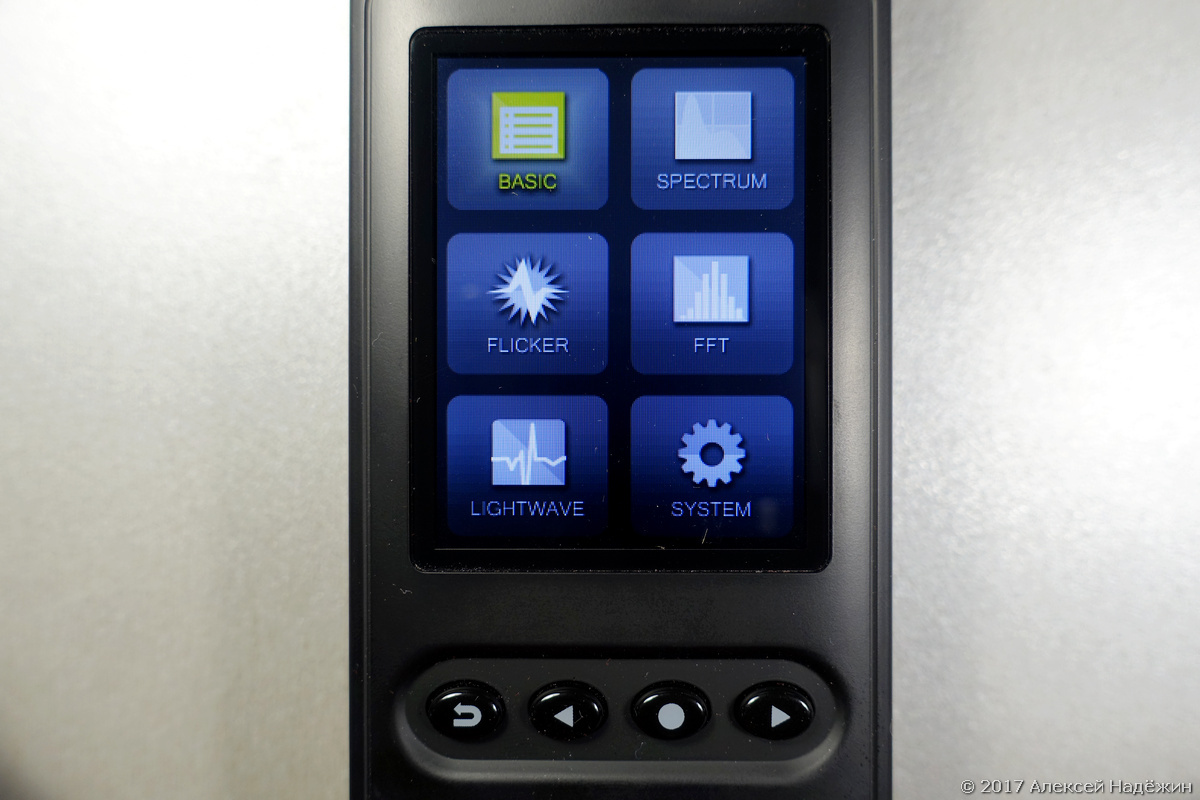
On the right side there is a rubber sticker, under which there is a MiniUSB connector and a slot for a MicroSD memory card. The connector will not work, and you can save measurement results to the card.

When turned on, the device offers to calibrate. To calibrate, you need to close the sensor cover and press the button with a circle.

Control is through the menu. The arrow buttons move the pointer around the menu, the dot button activates the desired item, the back button allows you to return to the main menu.
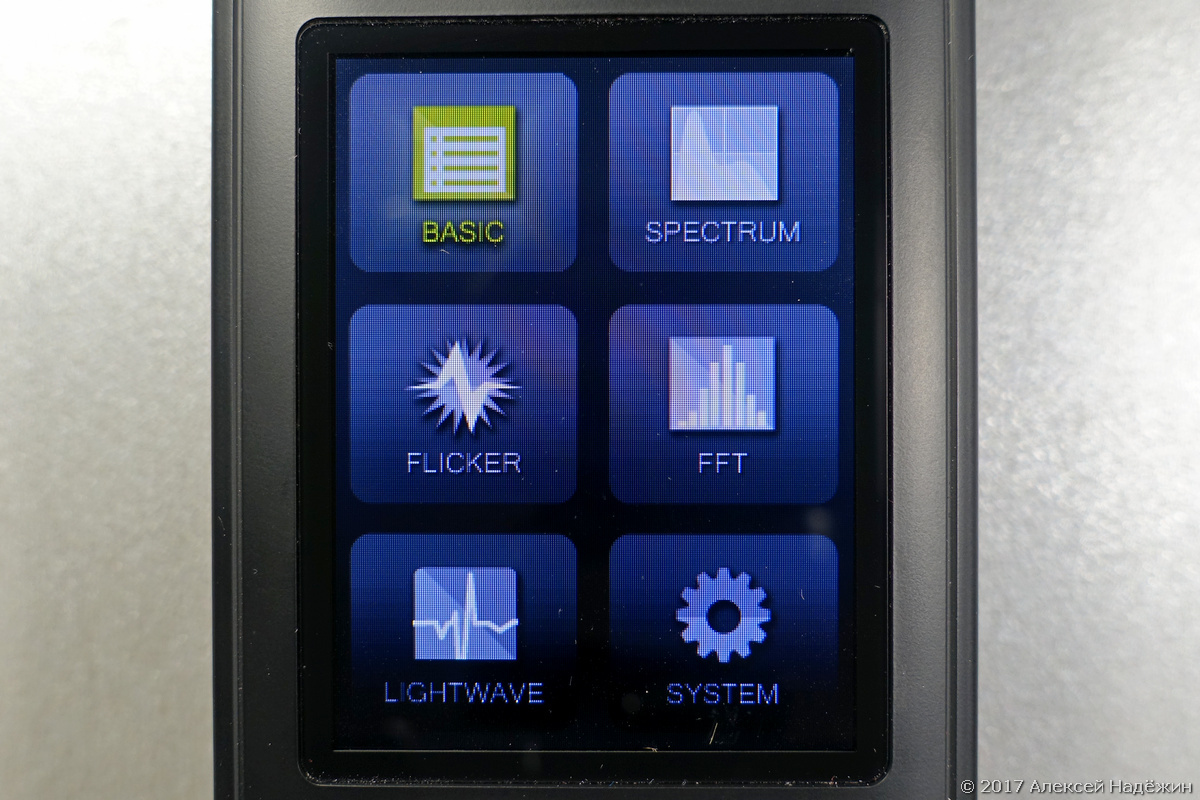
The first point is the basic parameters of light.

CCT - color temperature;
CRI - color rendering index;
Lux - illumination;
λP - peak wavelength;
iTime - integration time (the spectrometer takes many measurements during the specified time and calculates average values. The less light, the longer the integration time is required).
The second point is the spectrum.

The third, fourth and fifth points relate to the measurement of pulsation. Pulsation is measured continuously. You can stop and continue continuous measurement (HOLD mode) using the button on the right side of the device.
The main pulsation measurement screen is FLICKER mode.
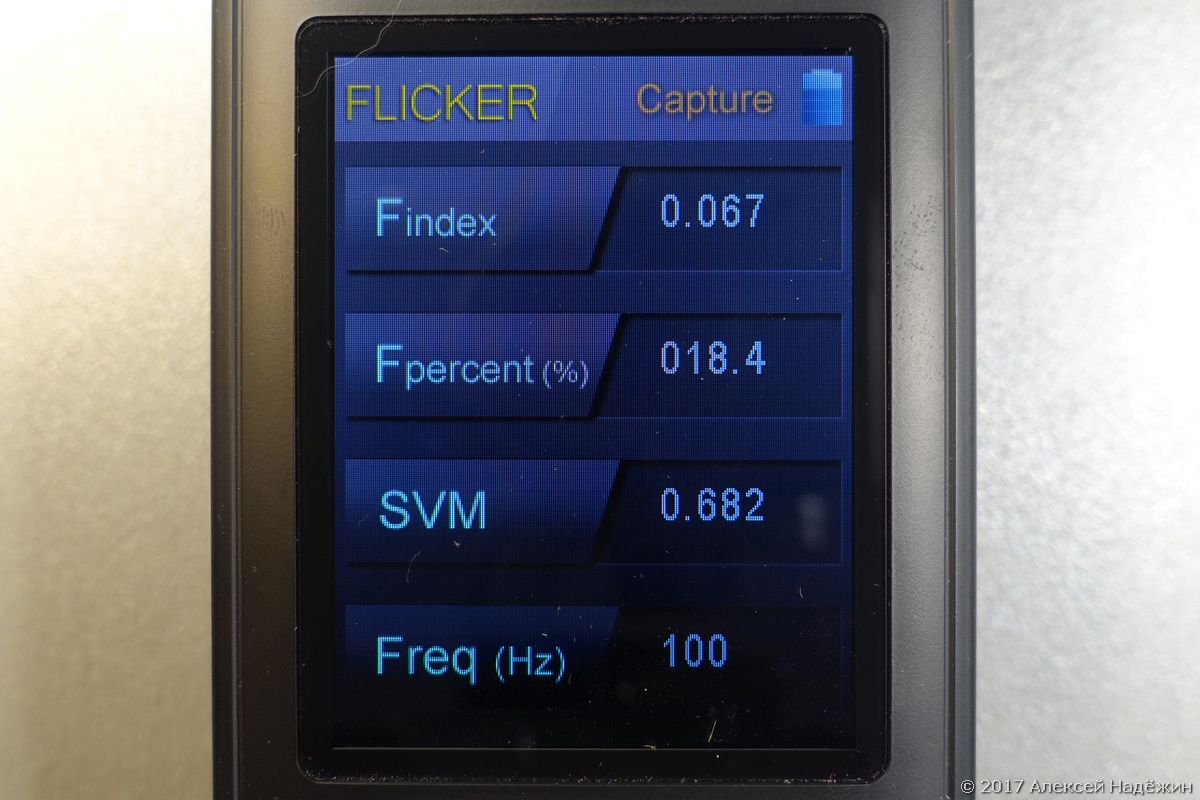
Findex - ripple index. A parameter that takes into account both the change in brightness during pulsation and the pulse ratio.
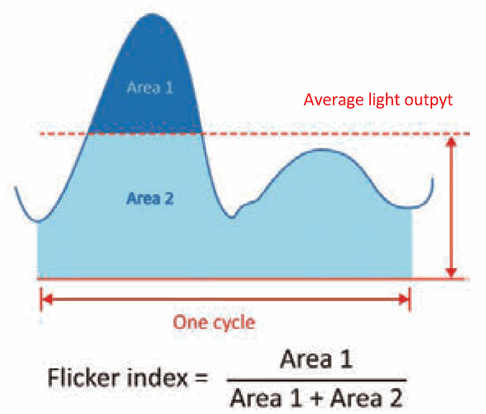
Fpercent (%) - the percentage of pulsation. When there is no ripple, it is zero. At maximum ripple, its value is 100%. The percentage of pulsation is calculated from the minimum and maximum of the brightness of the light.
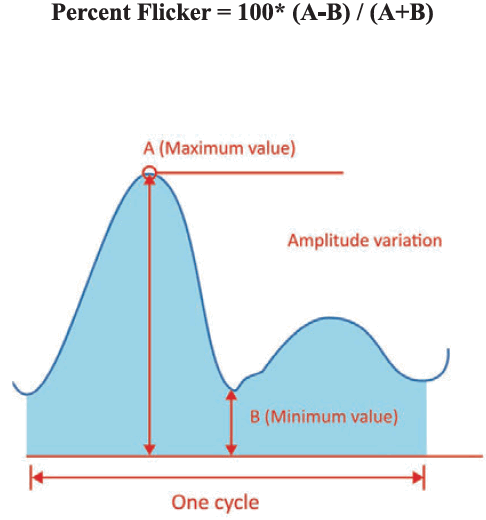
SVM (Stroboscopic Visibility Measure) - the level of the visible stroboscopic effect.
Freq (Hz) - the main frequency of the pulsation.
FFT mode displays the frequency distribution of the ripple using the Fast Fourier Transform method.
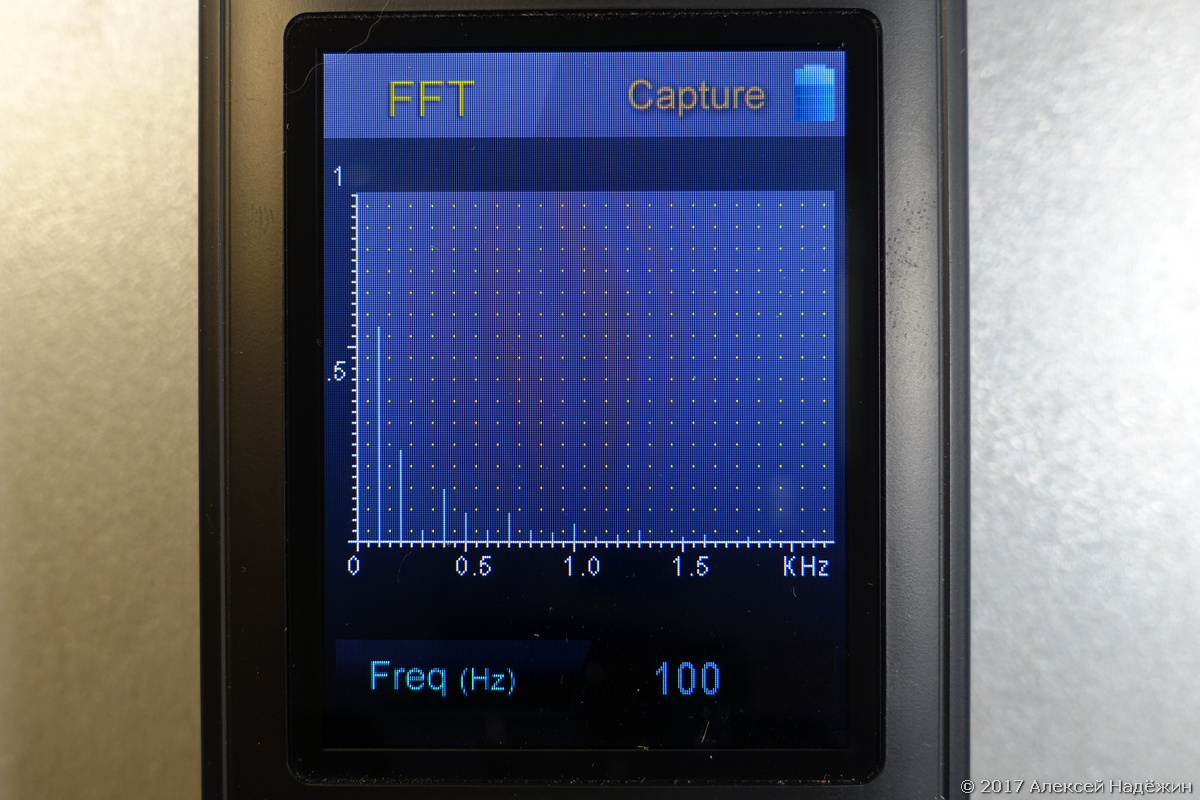
LIGHTWAVE mode displays the waveform of the pulsation shape.

In SYSTEM mode, you can enable or disable the sound of pressing buttons, adjust the screen brightness and power saving mode, view the firmware version.
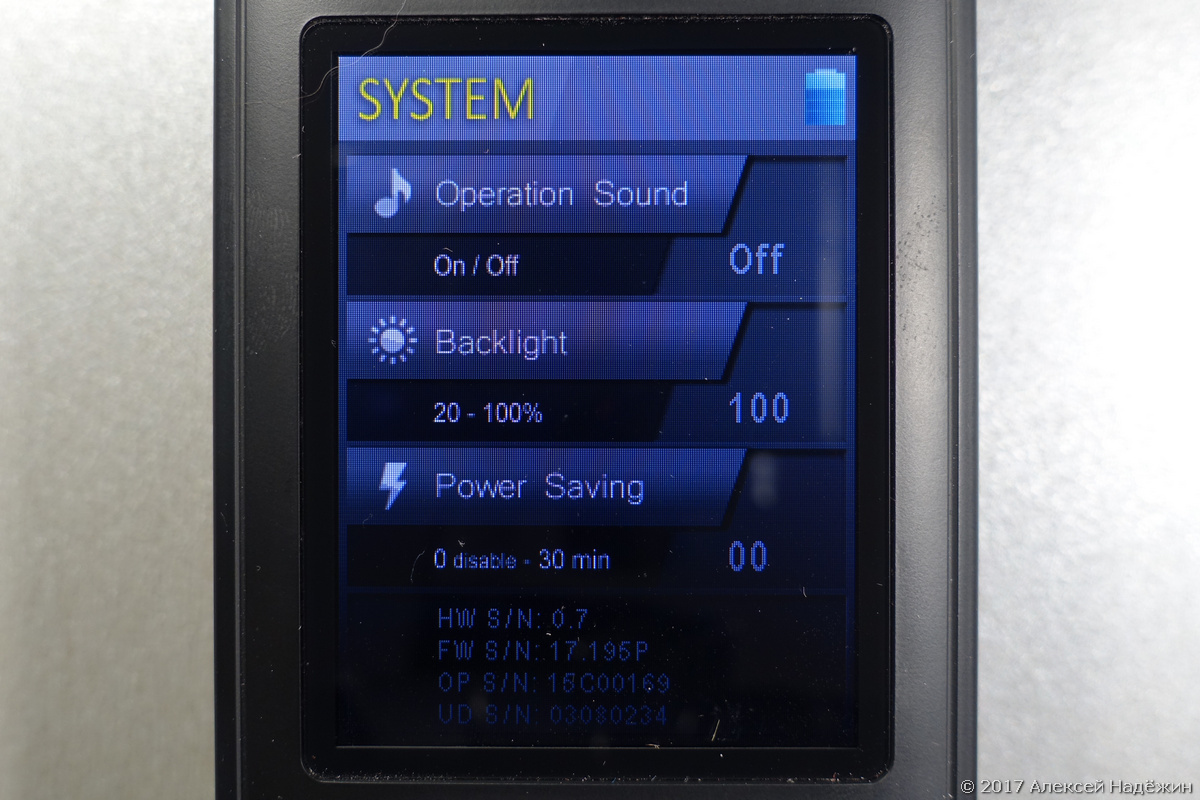
You can save measurement data to a memory card in BASIC and FLICKER modes. To do this, press and hold the button with a point, being in one of these modes.
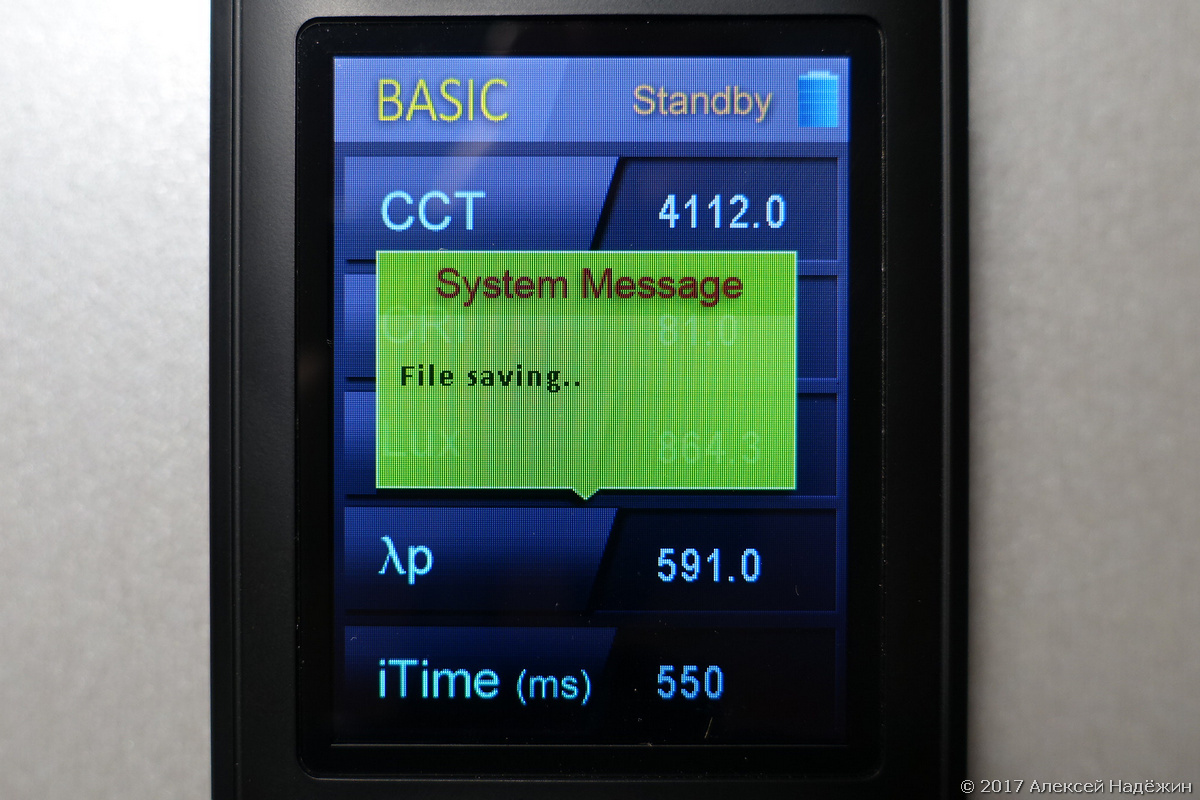
Each new save is assigned a new number.

Data is saved in Excel format. The results of spectrometry in the file RAW_SPD.XLS, the results of measurement of pulsations in the file RAW_FLK.XLS.
Each line in the RAW_SPD.XLS file has a new dimension. In column 1 - the number of measurement, in columns 2-6, color temperature, color rendering index, illuminance, peak wavelength, integration time. In columns 7-207, the level values by wavelengths (the value of the level at the peak wavelength is taken as a unit).

File format is RAW_FLK.XLS.

It is not convenient that the device can not measure simultaneously the parameters of the spectrum and pulsation. The transition from one mode to another is also not the most convenient - to go from the mode of measuring the parameters of the spectrum to the mode of measuring the pulsation, you need to press four buttons: (back, right, right, point).
It is not very convenient that there is no automatic saving to the memory card and you need to hold the button with a dot for two seconds each time. On the other hand, it’s good that the ability to save appeared at all, because in previous versions of the firmware it was not there.
However, we should not forget that the Uprtek MF250N is twice cheaper than other spectrometers and it also measures the pulsation, so that it can be forgiven some minor flaws, given that it has only slightly lower measurement accuracy than much more expensive instruments.
© 2017, Alexey Nadyozhin
Uprtek MF250N combines these two devices and, apparently, is the cheapest spectrometer in the world.

Spectrometers are of two types - those that analyze light and those that analyze the properties of materials in reflected light. The Wikipedia article is devoted to the second one, and the spectrometers I’m talking about are used to analyze the light.
')
Such spectrometers are quite expensive (primarily due to the fact that they are produced in small batches). The device UPRtek MK350D ( my review ), which I use in the project Lamptest, costs $ 1,700 and it is also considered cheap. The budget spectrometer pulse meter Uprtek MF250N costs twice cheaper - $ 850. It differs from more expensive models with a little lower accuracy, lack of connectivity to a computer and power supply from batteries. Before the latest firmware, the data could only be viewed on the device screen, but in the new firmware they added the ability to save data to a memory card, which was previously used only to update the firmware.
Spectrometers Uprtek is produced by the Taiwanese company of the same name. St. Petersburg-based INTECH Engineering participated in the development of spectrometers and the writing of mathematical models, and it also sells Uprtek products in Russia. Once again I want to express my gratitude to this company and its general director Alexey Pankrashkin for the MK350D spectrometer provided for the Lamptest project.
UPRtek MF250N analyzes the visible light in the wavelength range of 380-780 nm and can perceive light at illumination of 70-70000 lux. The resolution of the matrix is 16 bits, the step of measuring the wavelength is 1 nm, the step of writing to a file is 2 nm, the accuracy of measuring the wavelength is ± 1 nm, the error in measuring the illuminance is ± 5%. The spectrum is calculated peak wavelength, correlated color temperature (measurement error ± 3.5%), the average color rendering index Ra (measurement error ± 2.5%). The measurement accuracy of the color parameters of the MF250N is slightly lower than that of the more expensive Uprtek spectrometers (they have a color temperature measurement error of less than 2%, and a CRI measurement error of 1.5%).
Using a separate sensor, the parameters of light pulsation are measured. Measurement speed - 5 measurements per second. The range of illumination for measuring pulsations is 30-60000 lux. The measured pulse frequency is 5-2000 Hz. Pulsation parameters displayed: ripple index, ripple coefficient, level of visible stroboscopic effect (SVM), ripple frequency. There are modes of FFT graphics (Fast Fourier Transform) and an oscilloscope.
Power supply - 4 AA batteries. The time of continuous battery life is up to 5 hours. The size and weight of the device with batteries - 80x65x30 mm, 300 g
The package includes a cover.

The measuring head of the spectrometer is detached so that it can be turned over. A USB Type C connector is used, but the pin assignment is most likely non-standard.

The sensor window is closed with an opaque lid. In the center is the white window of the spectrometer sensor (the light is decomposed onto the spectrum using a diffraction grating and hits the linear CMOS array), and the pulsation sensor window is on top.

The device is powered by four AA batteries. You can use batteries.

On the left side is an on / off button.

On the right side is the start button for measuring the spectrum.

The screen of the device has dimensions of 43 x 58 mm (2.8 "). It is not touch-sensitive. The choice of modes is carried out by four buttons.

On the right side there is a rubber sticker, under which there is a MiniUSB connector and a slot for a MicroSD memory card. The connector will not work, and you can save measurement results to the card.

When turned on, the device offers to calibrate. To calibrate, you need to close the sensor cover and press the button with a circle.

Control is through the menu. The arrow buttons move the pointer around the menu, the dot button activates the desired item, the back button allows you to return to the main menu.

The first point is the basic parameters of light.

CCT - color temperature;
CRI - color rendering index;
Lux - illumination;
λP - peak wavelength;
iTime - integration time (the spectrometer takes many measurements during the specified time and calculates average values. The less light, the longer the integration time is required).
The second point is the spectrum.

The third, fourth and fifth points relate to the measurement of pulsation. Pulsation is measured continuously. You can stop and continue continuous measurement (HOLD mode) using the button on the right side of the device.
The main pulsation measurement screen is FLICKER mode.

Findex - ripple index. A parameter that takes into account both the change in brightness during pulsation and the pulse ratio.

Fpercent (%) - the percentage of pulsation. When there is no ripple, it is zero. At maximum ripple, its value is 100%. The percentage of pulsation is calculated from the minimum and maximum of the brightness of the light.

SVM (Stroboscopic Visibility Measure) - the level of the visible stroboscopic effect.
Freq (Hz) - the main frequency of the pulsation.
FFT mode displays the frequency distribution of the ripple using the Fast Fourier Transform method.

LIGHTWAVE mode displays the waveform of the pulsation shape.

In SYSTEM mode, you can enable or disable the sound of pressing buttons, adjust the screen brightness and power saving mode, view the firmware version.

You can save measurement data to a memory card in BASIC and FLICKER modes. To do this, press and hold the button with a point, being in one of these modes.

Each new save is assigned a new number.

Data is saved in Excel format. The results of spectrometry in the file RAW_SPD.XLS, the results of measurement of pulsations in the file RAW_FLK.XLS.
Each line in the RAW_SPD.XLS file has a new dimension. In column 1 - the number of measurement, in columns 2-6, color temperature, color rendering index, illuminance, peak wavelength, integration time. In columns 7-207, the level values by wavelengths (the value of the level at the peak wavelength is taken as a unit).

File format is RAW_FLK.XLS.

It is not convenient that the device can not measure simultaneously the parameters of the spectrum and pulsation. The transition from one mode to another is also not the most convenient - to go from the mode of measuring the parameters of the spectrum to the mode of measuring the pulsation, you need to press four buttons: (back, right, right, point).
It is not very convenient that there is no automatic saving to the memory card and you need to hold the button with a dot for two seconds each time. On the other hand, it’s good that the ability to save appeared at all, because in previous versions of the firmware it was not there.
However, we should not forget that the Uprtek MF250N is twice cheaper than other spectrometers and it also measures the pulsation, so that it can be forgiven some minor flaws, given that it has only slightly lower measurement accuracy than much more expensive instruments.
© 2017, Alexey Nadyozhin
Source: https://habr.com/ru/post/370961/
All Articles